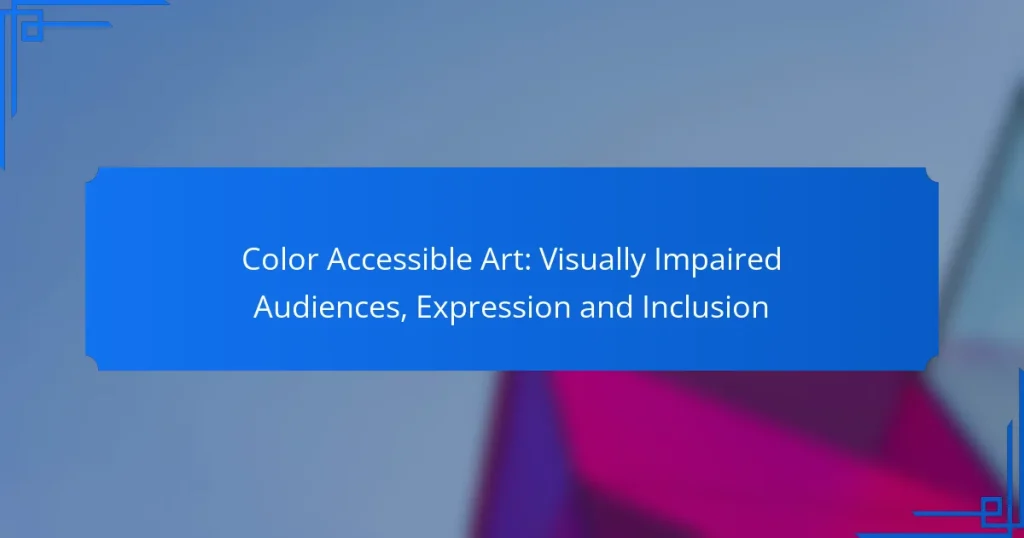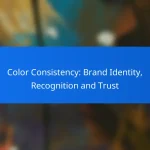Color accessible art plays a crucial role in enriching the experiences of visually impaired audiences by enabling them to connect with art on a deeper level. By incorporating techniques that emphasize tactile, auditory, and visual elements, this approach fosters inclusivity and enhances artistic expression for all. Various organizations are dedicated to promoting these practices, ensuring that art remains accessible and enjoyable for individuals with vision impairments.
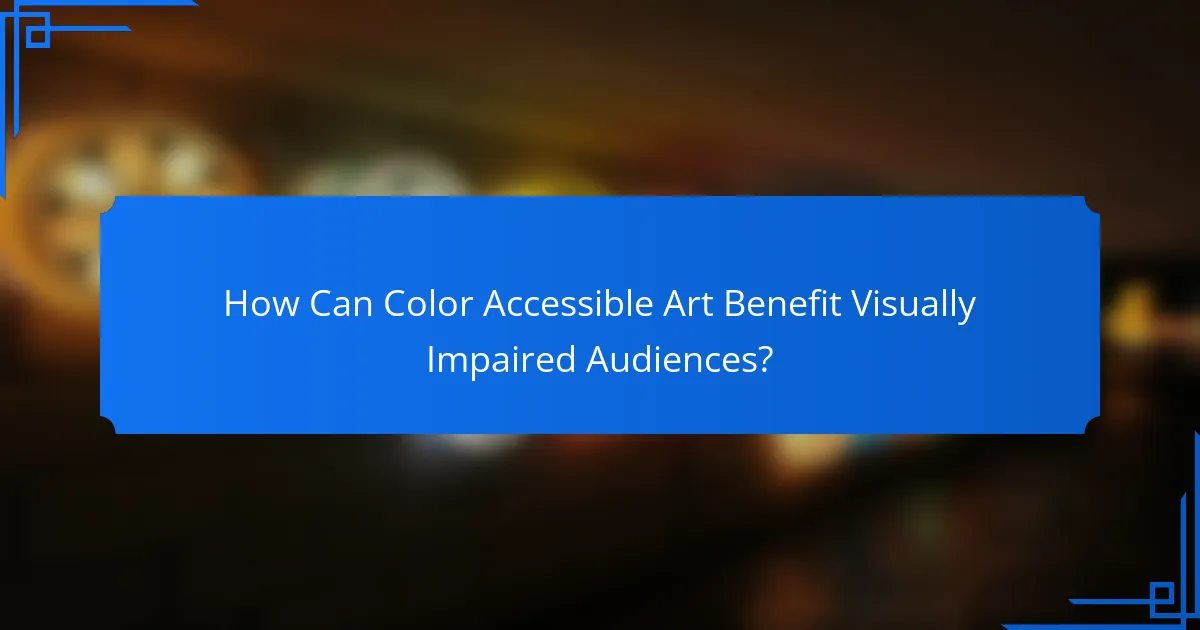
How Can Color Accessible Art Benefit Visually Impaired Audiences?
Color accessible art can significantly enhance the experience of visually impaired audiences by allowing them to engage with art in a meaningful way. This approach utilizes various techniques to ensure that colors and textures are perceivable, fostering a deeper connection to the artwork.
Enhanced emotional expression
Color accessible art enables visually impaired individuals to experience the emotional depth of a piece through tactile and auditory elements. For instance, artists can incorporate varied textures that evoke different feelings, allowing audiences to interpret emotions beyond visual perception. This multi-sensory approach enriches the overall experience, making art more relatable.
By using contrasting materials and sounds, artists can create a narrative that resonates emotionally, helping viewers to connect with the artwork on a personal level. This method not only conveys the artist’s intent but also invites the audience to explore their own feelings and interpretations.
Increased engagement with art
Visually impaired audiences are more likely to engage with art that is designed with accessibility in mind. Interactive elements, such as touchable sculptures or audio descriptions, can draw in individuals who might otherwise feel excluded from traditional art experiences. This engagement fosters a sense of belonging and encourages exploration.
Art institutions can enhance engagement by offering workshops that focus on creating accessible art. These initiatives can include hands-on activities that allow participants to create their own pieces, thereby deepening their connection to the art world.
Promotion of inclusivity
Color accessible art promotes inclusivity by ensuring that everyone, regardless of visual ability, can appreciate and enjoy artistic expression. This approach challenges societal norms and encourages a broader understanding of art, making it more welcoming for diverse audiences. It fosters a community where all individuals feel valued and represented.
Art organizations can adopt inclusive practices by collaborating with visually impaired artists and incorporating their perspectives into exhibitions. This not only diversifies the artistic landscape but also sets a precedent for future projects, ensuring that inclusivity remains a priority in the arts.
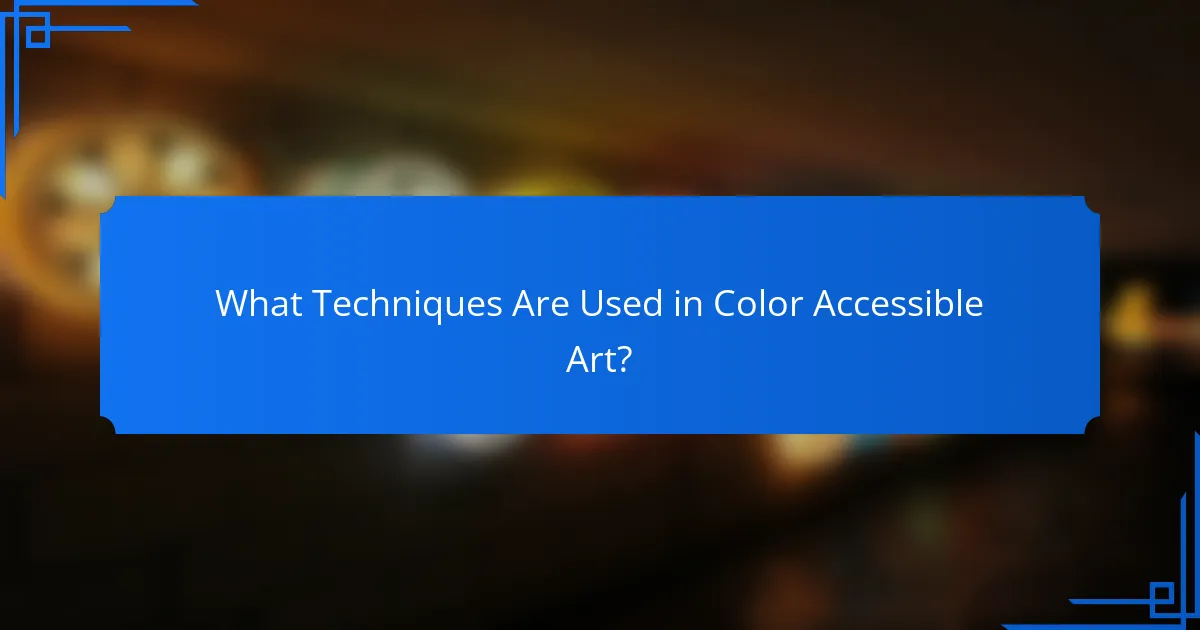
What Techniques Are Used in Color Accessible Art?
Color accessible art employs various techniques to ensure that visually impaired audiences can engage with and appreciate artistic expression. These methods enhance the sensory experience through tactile, auditory, and visual elements that cater to diverse needs.
Use of tactile elements
Tactile elements in color accessible art allow individuals to feel and interact with the artwork. Artists often incorporate raised surfaces, varied materials, and three-dimensional structures to create a physical connection.
For example, sculptures made from different textures such as wood, metal, and fabric can provide distinct sensations. This approach not only invites touch but also encourages a deeper understanding of the piece’s form and composition.
Incorporation of sound
Sound plays a crucial role in making art accessible to visually impaired audiences. Artists may integrate audio components, such as spoken word, music, or ambient sounds, to convey emotions and narratives associated with the artwork.
Interactive installations can include soundscapes that change based on the viewer’s movement or actions, enhancing the immersive experience. This technique allows for a multi-sensory exploration of art that transcends visual limitations.
Contrast and texture variations
Contrast and texture variations are essential for creating visual interest in color accessible art. Artists can use high-contrast colors and varying textures to help visually impaired individuals distinguish between different elements of a piece.
For instance, using bold colors alongside softer hues can create a striking visual impact, while incorporating different textures can aid in identifying shapes and forms. This method not only enhances accessibility but also enriches the overall aesthetic experience.
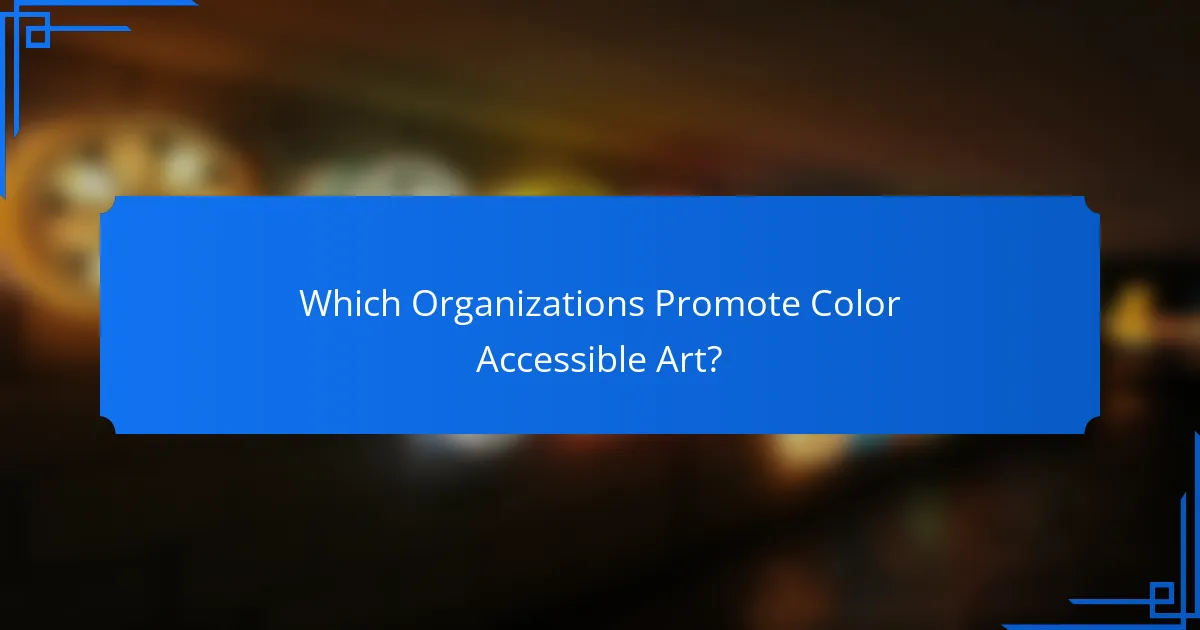
Which Organizations Promote Color Accessible Art?
Several organizations focus on promoting color accessible art for visually impaired audiences, ensuring inclusivity and expression in the arts. These organizations work to create resources, programs, and initiatives that enhance the experience of art for those with vision impairments.
National Federation of the Blind
The National Federation of the Blind (NFB) is a leading organization advocating for the rights of blind individuals in the United States. They promote accessibility in various fields, including the arts, by providing resources and support for artists and institutions to create inclusive environments.
NFB offers programs that encourage the development of accessible art initiatives, such as workshops and training for artists on how to make their work more inclusive. They also collaborate with museums and galleries to ensure that their exhibitions are accessible to all audiences.
Art Beyond Sight
Art Beyond Sight is dedicated to enhancing the visual arts experience for people with visual impairments. This organization provides resources, training, and guidelines for artists and institutions to create art that is accessible and engaging for visually impaired audiences.
Through workshops and educational materials, Art Beyond Sight teaches artists how to incorporate tactile elements and descriptive audio into their work. They also advocate for the inclusion of blind and low-vision individuals in the art community, promoting a diverse range of artistic expression.
Accessible Arts Australia
Accessible Arts Australia focuses on promoting access to the arts for people with disabilities, including those who are visually impaired. They work to ensure that cultural institutions in Australia are equipped to provide inclusive experiences for all audiences.
This organization offers resources and support for artists and organizations to develop accessible programs and exhibitions. They also provide training and advocacy to help improve accessibility standards across the arts sector in Australia, fostering a more inclusive environment for everyone.
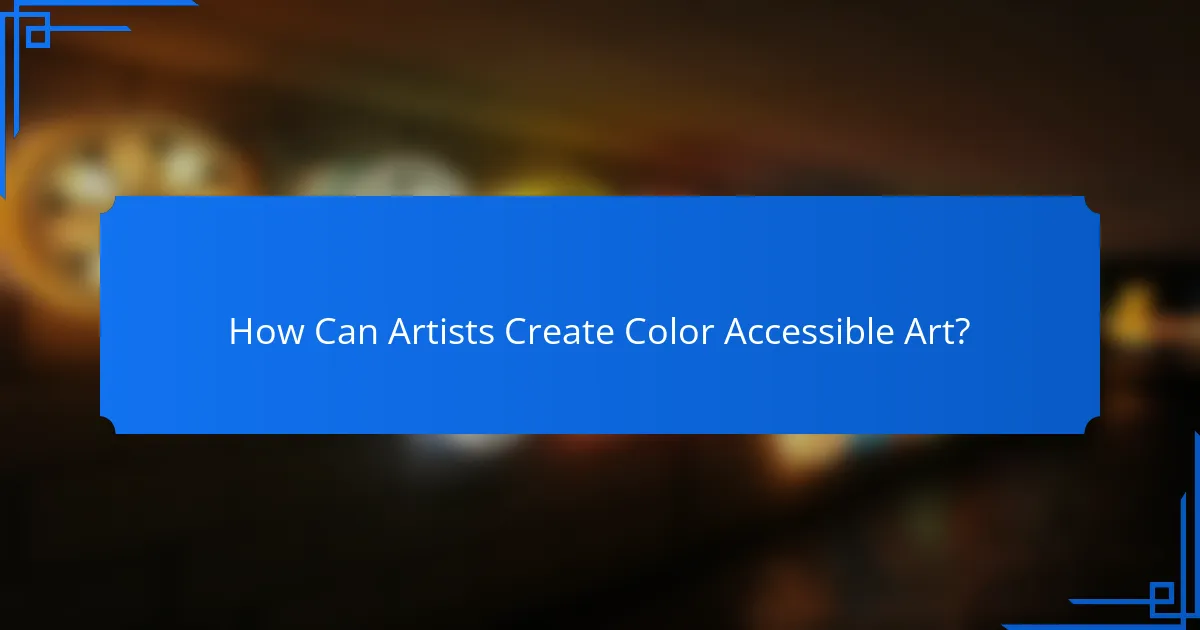
How Can Artists Create Color Accessible Art?
Artists can create color accessible art by incorporating techniques and tools that enhance visual experiences for individuals with visual impairments. This involves using a combination of assistive technology, collaboration with visually impaired individuals, and establishing feedback loops to refine their work.
Utilizing assistive technology
Assistive technology plays a crucial role in making art more accessible. Tools like screen readers and color identification apps can help artists understand how their work is perceived by those with color vision deficiencies. For example, using software that simulates various visual impairments allows artists to see their art from different perspectives.
Additionally, tactile graphics and 3D printing can create physical representations of artwork, enabling visually impaired audiences to experience art through touch. Artists should explore various technologies to find the best fit for their creative process and audience needs.
Collaborating with visually impaired individuals
Collaboration with visually impaired individuals can provide valuable insights into their experiences and preferences. Engaging with this community during the creative process helps artists understand what elements resonate and what may be challenging. This can involve workshops, focus groups, or one-on-one discussions.
Artists should consider inviting visually impaired individuals to participate in the creation of art or to provide direct feedback on their work. This inclusive approach not only enriches the artistic process but also fosters a sense of belonging and representation within the art community.
Implementing feedback loops
Establishing feedback loops is essential for refining color accessible art. Artists should actively seek input from visually impaired audiences after presenting their work. This can be done through surveys, interviews, or informal discussions to gather insights on how effectively the art communicates its intended message.
Regularly incorporating feedback allows artists to make informed adjustments, ensuring their work remains engaging and accessible. Creating a cycle of continuous improvement can lead to more impactful art that resonates with a broader audience.
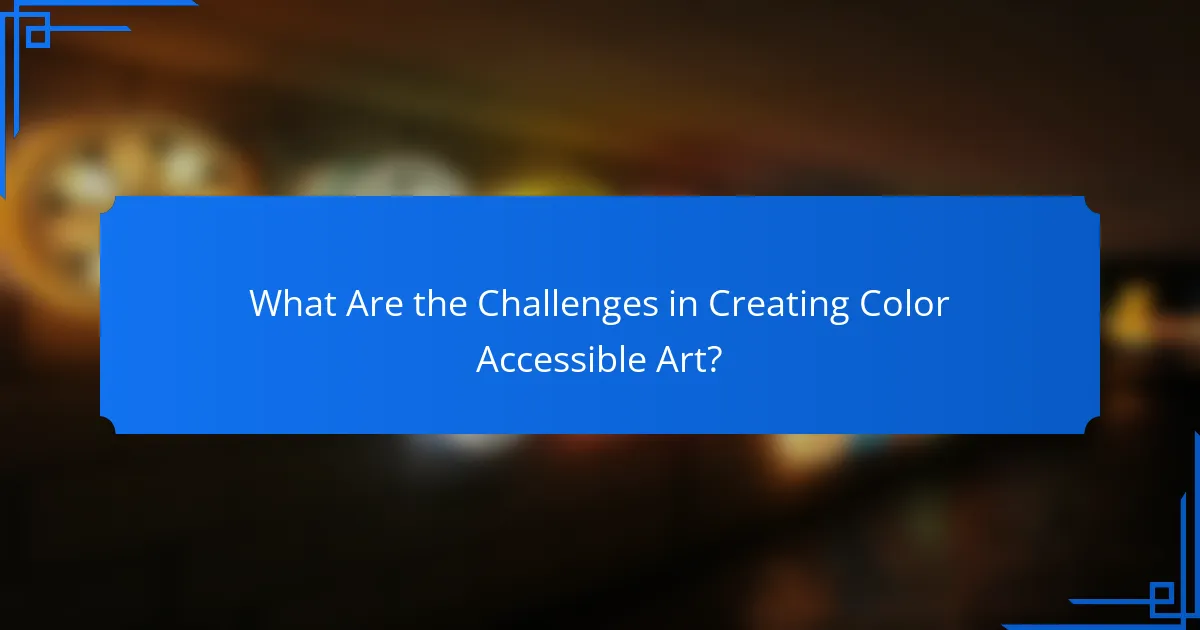
What Are the Challenges in Creating Color Accessible Art?
Creating color accessible art involves overcoming various challenges that affect both artists and audiences. These challenges include limited resources, perception barriers within the art community, and issues related to funding and support.
Limited resources for artists
Many artists face a lack of access to materials and tools that support color accessibility. This can include specialized paints, software, or educational resources that help them understand color theory in relation to visual impairments.
Additionally, workshops and training programs focused on creating accessible art are often scarce, making it difficult for artists to enhance their skills in this area. Artists may need to seek out community resources or online courses to fill these gaps.
Perception barriers in the art community
There is often a stigma surrounding art that is designed for accessibility, leading to misconceptions about its quality or value. Some artists may feel pressured to conform to traditional standards of art, which can discourage them from exploring color accessibility.
Furthermore, galleries and institutions may prioritize mainstream art, limiting opportunities for accessible works to be showcased. This can create a cycle where artists do not receive recognition for their inclusive efforts.
Funding and support issues
Securing funding for projects that focus on color accessible art can be challenging. Many grant programs do not specifically address accessibility, leading to fewer financial resources for artists pursuing this niche.
Artists may need to explore alternative funding sources, such as crowdfunding or partnerships with organizations that support disability inclusion. Building a network of supporters can also help in gaining visibility and financial backing for accessible art initiatives.
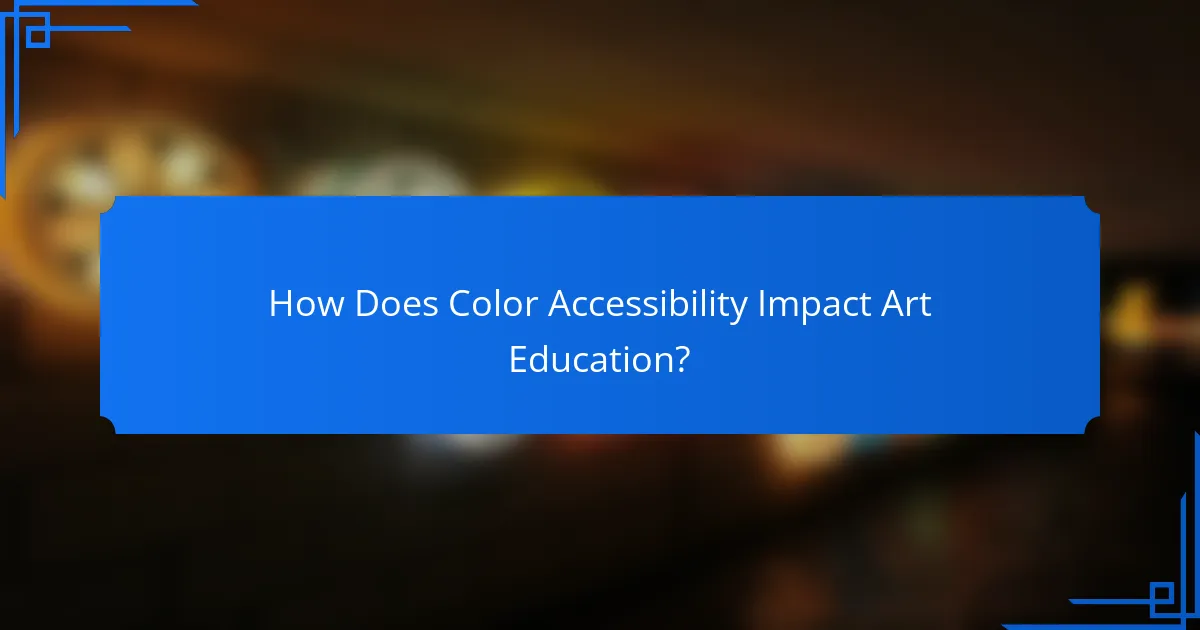
How Does Color Accessibility Impact Art Education?
Color accessibility significantly enhances art education by ensuring that visually impaired students can engage with and appreciate art. This inclusivity fosters a richer learning environment and promotes diverse expressions of creativity.
Curriculum adaptations
Adapting the art curriculum to accommodate color accessibility involves integrating tactile and auditory elements into lessons. For instance, using textured materials or sound-based descriptions can help visually impaired students understand color concepts and artistic techniques.
Instructors should consider incorporating tools like color identifiers or apps that describe colors aloud. These adaptations not only support visually impaired students but also enrich the learning experience for all students by introducing varied perspectives on art.
Additionally, providing alternative assessments, such as projects focusing on texture or form rather than color, can help ensure that all students demonstrate their understanding of artistic principles effectively.
